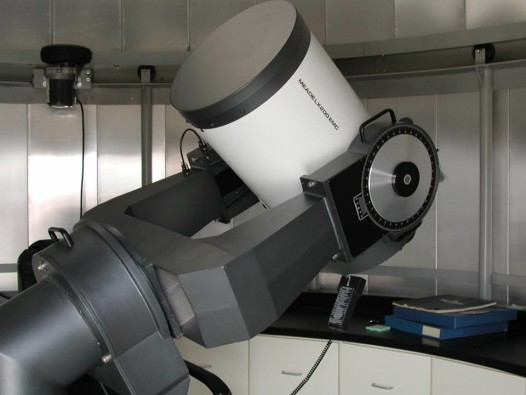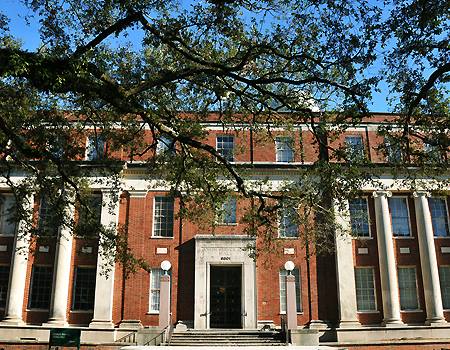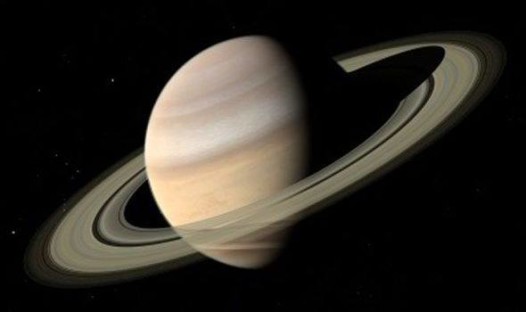New Orleans astronomy buffs have a new place to take in the wonders of outer space. The Tulane University will now be open to the public once a month. We recently sat down with Professor Emeritus of Physics, Dr. Dan Purrington, to find out about this opportunity to view the skies.

The 16-inch telescope at Tulane University Observatory (Photo: via Tulane University Observatory Facebook page)
Tell us a little bit about the Tulane Observatory.
Well, the Tulane Observatory is actually fairly new. It was built in 2001, but it replaced a building that many of your listeners would know. It was built in 1940 and it was a charming little building on the Tulane campus, replaced by the business school in 2001. Astronomy has been taught at Tulane since 1910, at least. We have a brand new facility, which is really quite nice.
Where is it located? And what kind of telescope does it have?
It is located on the roof of Jones Hall on Tulane Campus, which is the building right across from the Tulane Library. So, on the roof, you must take the elevator to the third floor. It has a 16-inch computer controlled, modern electronic telescope, which is a huge improvement over the telescope we had prior to 2001. Many people bemoan the loss of that old building, but we got a much better facility and it’s up high. It’s not on the ground. It’s a much nicer facility.
This was opened once before to the public, I understand. Why are you doing it now?
We opened it once in August of 2003 when Mars was closer than it’d ever been in 60,000 years. Only by a few miles, but in any case, we had 1100 people who showed up in two nights and that’s the last time we did it.
it’s actually student driven. Some students came to our chairman and he sent them to me and we started talking about it. I’d been thinking about doing that, but you know, at Research University, there are no rewards for the public outreach. Now I’m retired. Maybe I can sort of justify my existence still on the campus.
You have run that observatory since 1972. So you must know everything there is to know about the sky.
Well, I’ve been in Astronomy since I was 10 and that’s a few years ago. I wouldn’t say everything, but I’ve taught Astronomy and Astrophysics for many years.

The observatory is atop Jones Hall on the Tulane campus (Photo: via Tulane University Observatory Facebook page)
What has been the most memorable happening in the sky since you’ve been looking through that observatory and telescope at Tulane?
Well, actually, the most memorable experience with the sky was the Leonid Meteor Shower around the year 2000, 1998 to 2001. That was not at the observatory. For a meteor shower, you don’t go to an observatory in the middle of a campus, light polluted and so on.
I guess maybe taking images of galaxies, which is very, very difficult from a light polluted location, but with the right kind of equipment, you can do it. In any case, views of Saturn and Jupiter and Mars and Mars when it’s closest, etc.
How far can you see with this new telescope?
There’s no real answer to that because if something is very far away but very bright, then you can see it. If it’s very close by and faint, you can’t see it. So, really there isn’t an answer to it, but it’s easy to see there are objects that are billions of light years away that can be seen.
What do you hope to show people who come to see the stars?
Not meteor showers. Generally speaking, not galaxies, not deep sky objects because there’s just too much light pollution in the middle of the city and in the middle of campus. But especially the bright planets, Jupiter and Saturn. Everyone loves to see Saturn, Mars and the Moon. I think we’ll actually have a Sun solar session on May 9th. I haven’t actually finalized it, but there’ll be what’s called a transit of Mercury, where Mercury actually passes across the disc of the sun and that would be nice to view. The only problem with these sessions is that if we have 100 people, as we did the other night, it takes a long time to file everybody through. But when the demand is there, that’s what happens.

Saturn and its rings (Photo: via Tulane University Observatory Facebook page)
And you set the telescope to whatever is the most appealing event happening that particular time in the sky?
Yeah, the particular object that’s best situated. It might be Jupiter right now or it might be the Moon. Later, and I guess we might have to wait until we resume in September, but we’ll certainly get people good views of Saturn.
What about the new Planet Nine? Can you see that?
No. Distant objects — it’s technically possible to see Pluto with this telescope, but anything else is faint or you’re simply not going to see.
What kind of reactions have you gotten from the public about what they’re seeing through the telescope? This is a new opportunity for locals.
UNO has had public sessions, I believe, in the past. And there are a few clubs. The Pontchartrain Astronomy Society does some things. I think it’s good that we’re giving them this opportunity and I sense a lot of enthusiasm. I was so busy the other night, I didn’t really have a chance to talk much to people. A couple of my students were doing a great job of interacting with the public and they said there’s a lot of enthusiasm.
So I hope that people are not too deterred by a large crowd. Ideally we’d have 20 people, but then we wouldn’t be serving the public.
You were going to do this on a set monthly schedule, but I think that you’re rethinking that?
We have a Facebook page that the students have set up and that’s where people should go. It’s called Tulane University Observatory, I think. In the first place, we might have to cancel because of bad weather and also the events in the sky don’t necessarily correspond to the first Wednesday of the month. So, we may tweak that a little bit and try to accommodate what is of interest . So people should stay tuned for that.
You’ve been doing this for quite a while. Have you seen an interest in astronomy and the skies go up because of all that we’ve discovered and because of the news?
Astronomy is sort of a unique science. I mean, it’s the oldest of the sciences, but it also adds an aesthetic dimension to it. It’s almost unique among the sciences in that people can do a little bit themselves. They can walk out in their backyard and look at the stars or the Moon. You can’t really do that with chemistry or physics, so it’s as technical and as deep as any of the other sciences but it also has that sort of aesthetic dimension. And then of course it deals with first and last things. The origin of the universe and the fate of the universe. There’ve been a lot of important discoveries, cosmology and large-scale features of the universe.
It’s not surprising that people are interested.
What’s your favorite constellation?
I never thought about that, but I suppose there are a couple of obvious ones, Orion or Scorpio. Maybe Scorpio because it really looks like a scorpion, Sagittarius because it’s right in the center of the Milky Way.
What heavenly eent can see best from New Orleans?
For another month or less, Orion is well placed in the sort of southwestern sky, in the western sky. The brightest star in the sky, Sirius, is there. That’s the best part of the sky to look at at dusk.
What are some of the things coming up this spring that novices can look forward to?
I would like to have a session when the Moon is near first quarter, which is the best time to look at it because the shadows are longest and the craters are most easily seen.
Then, this Transit of Mercury is actually in the morning, so it’s the daytime. It’s not going to be at night. If people are willing, we might have a late-night session to look at Saturn because Saturn will still be rising pretty late at night.
You never know. A comet may be discovered tomorrow that’s going to be a brilliant object in the evening sky in a few months. Comets are totally unpredictable aside from those that are periodic. Most of those are not very bright. Comet Hale-Bopp in 1996, I guess was actually much more spectacular than Halley’s Comet.
Things that are unpredictable, you just have to wait for.
So you don’t have to go to the observatory only at night to see the skies.
No, no. Obviously if you want to see the Sun, you’re going to do it in the daytime and we do have a filter that allows one to look at the sun. You can see sun spots, although right now, sun spot cycle is in a declining stage, so that people who come to see the Transit of Mercury probably won’t see much in the way of sun spots. Mercury is going to pass directly in front of the sun. Most people won’t see Mercury at all. It is said that Nicholas Copernicus, who created the heliocentric system, never saw Mercury, it’s so hard to see.
For more information on the observatory’s public viewings, go to the Tulane University Observatory Facebook page. The next public observing session will be held on May 4, weather permitting. There also will be a May 9 daytime session to watch the Transit of Mercury across the face of the sun. Times will be announced on the Facebook page.
 NOLAbeings Multimedia artist Claire Bangser created NOLAbeings as a portrait-based story project that marries...
NOLAbeings Multimedia artist Claire Bangser created NOLAbeings as a portrait-based story project that marries...  Voodoo in New Orleans: Reviving history: New Orleans fortune telling This article takes a deep dive into the history of Voodoo in New Orleans, its hybridization with Catholicism, and its present-day place in the city's culture. The author visits fortune-tellers in the French Quarter, using their guidance as a tool for introspection rather than a deterministic predictor of the future. Through her experiences in New Orleans, the author feels a mystical connection to both the past and the future.
Voodoo in New Orleans: Reviving history: New Orleans fortune telling This article takes a deep dive into the history of Voodoo in New Orleans, its hybridization with Catholicism, and its present-day place in the city's culture. The author visits fortune-tellers in the French Quarter, using their guidance as a tool for introspection rather than a deterministic predictor of the future. Through her experiences in New Orleans, the author feels a mystical connection to both the past and the future. 